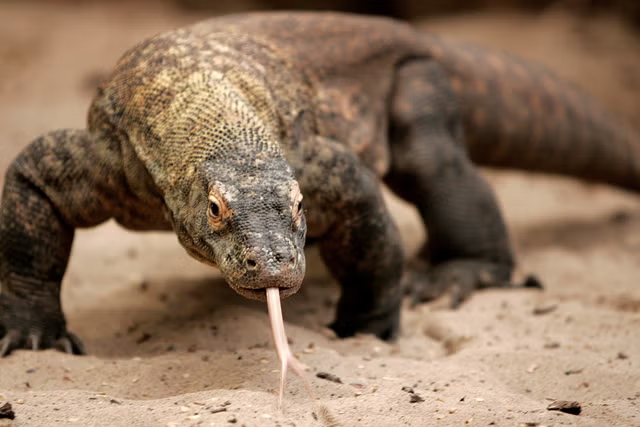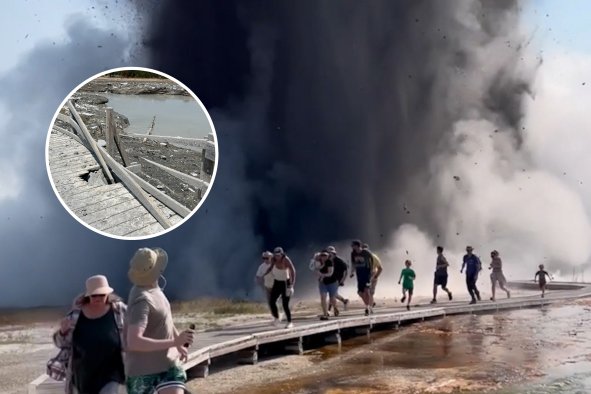A brand new NASA video reveals the fascinating patterns of carbon dioxide moving around our atmosphere.
The visualization shows CO2 pouring out from major cities in the U.S., before being blown into swirling eddies by atmospheric currents.
The video, which shows the CO2 patterns between January and March 2020, was created using a model named the Goddard Earth Observing System (GEOS), which uses supercomputers to simulate the atmosphere based on data from satellite instruments including the Terra satellite's MODIS and the Suomi-NPP satellite's VIIRS, as well as ground observations.
"As policymakers and as scientists, we're trying to account for where carbon comes from and how that impacts the planet," Lesley Ott, a climate scientist at NASA's Goddard Space Flight Center in Greenbelt, Maryland, said in a statement. "You see here how everything is interconnected by these different weather patterns."
Human activities, such as burning fossil fuels, deforestation, and industrial processes, have significantly increased the concentration of CO2 in the atmosphere. Since the Industrial Revolution, atmospheric CO2 levels have risen from about 280 parts per million (ppm) to over 400 ppm. The U.S. alone released 6,343 million metric tons of carbon dioxide in 2022, according to a report by the United States Environmental Protection Agency.
CO2 can be seen rising from major centers of fossil fuel burning, such as cities and power stations across China, the United States, and South Asia. In Africa and South America, CO2 is mainly seen emanating from fires, mainly from deforestation and controlled burns. The plumes of CO2 appear to pulse with the passing of the days, increasing during the daylight hours and calming at night.
This is partly because the CO2-emitting fires usually die down during the night, but also because plants and trees that absorb CO2 from the atmosphere only photosynthesize during the day. This is why the pulsing appears most obvious above forests, where there is more photosynthesis and more fires.
"We had a feeling we were going to see plume structures and things that we've never been able to see when we do these coarser resolution simulations," Ott said. "Just seeing how persistent the plumes were and the interaction of the plumes with weather systems, it was tremendous."
Despite it appearing that CO2 is clustered in some areas and missing in others, the gas is present everywhere, just in higher concentrations directly above areas where it is being emitted in large amounts.
"We didn't want people to get the impression that there was no carbon dioxide in these sparser regions," AJ Christensen, a senior visualization designer at NASA's Goddard Space Flight Center, said in the statement. "But we also wanted to really highlight the dense regions because that's the interesting feature of the data. We were trying to show that there's a lot of density over New York and Beijing."
This shows the true scale of our CO2 emissions and the extent to which we are causing climate change.
Greenhouse gases, including CO2, water vapor, methane (CH4), and nitrous oxide (N2O), absorb and re-radiate some of the sun's infrared radiation back towards the Earth's surface, trapping heat in the atmosphere and warming the planet. This increased temperature affects weather patterns, leading to more extreme weather events such as hurricanes, droughts, heatwaves, and heavy rainfall, as well as melting polar ice caps and glaciers, contributing to rising sea levels.
According to the latest report by the Intergovernmental Panel on Climate Change, humans have "unequivocally caused warming," with 2023 being the hottest year on record.
"What's happening is you're stitching together this very complex array of models to make use of the different satellite data, and that's helping us fill in this broad puzzle of all the processes that control carbon dioxide," Ott said. "The hope is that if we understand greenhouse gases really well today, we'll be able to build models that better predict them over the next decades or even centuries."
Do you have a tip on a science story that Newsweek should be covering? Do you have a question about CO2? Let us know via science@newsweek.com.
Disclaimer: The copyright of this article belongs to the original author. Reposting this article is solely for the purpose of information dissemination and does not constitute any investment advice. If there is any infringement, please contact us immediately. We will make corrections or deletions as necessary. Thank you.



